From Antenna Optimization to MIMO Structures: A Unified Design Framework
Abstract
1. Introduction
2. Materials and Methods
3. Results
3.1. Optimizing the First Antenna Structure
3.2. Optimization Process for the Second Antenna Structure
4. Analysis of the MIMO Antennas Constructed from Two Antennas
4.1. MIMO Antennas Constructed from the Yagi–Uda Planar Antenna
4.2. MIMO Antennas Constructed from the Key Planar Antenna
5. Discussion
6. Conclusions
Author Contributions
Funding
Institutional Review Board Statement
Informed Consent Statement
Data Availability Statement
Acknowledgments
Conflicts of Interest
Abbreviations
| ECC | Envelope correlation coefficient |
| DG | Diversity gain |
| VNA | Vector network analyzer |
| MIMO | Multiple input multiple output |
| HFSS | High Frequency Structure Simulator |
References
- Jayant, S.; Srivastava, G.; Kumar, S.; Mostafa, H.; Goyal, B.; Choi, H.C.; Kim, K.W. Decoupling Methods in Planar Ultra-Wideband Multiple-Input-Multiple-Output Antennas: A Review of the Design, State-of-the-Art, and Research Challenges. Electronics 2023, 12, 3813. [Google Scholar] [CrossRef]
- Ibrahim, S.K.; Singh, M.J.; Al-Bawri, S.S.; Ibrahim, H.H.; Islam, M.T.; Islam, M.S.; Alzamil, A.; Abdulkawi, W.M. Design, Challenges and Developments for 5G Massive MIMO Antenna Systems at Sub 6-GHz Band: A Review. Nanomaterials 2023, 13, 520. [Google Scholar] [CrossRef]
- Ahmed, M.; Zafar, Z.; Javed, I.; Zahid, M.; Amin, Y. 12 Element Inverted E-Shaped Massive MIMO Antennas for Future 5G Smartphone Applications. In Proceedings of the 2023 7th International Multi-Topic ICT Conference (IMTIC), Jamshoro, Pakistan, 10–12 May 2023; pp. 1–5. [Google Scholar] [CrossRef]
- Musaed, A.A.; Al-Bawri, S.S.; Abdulkawi, W.M.; Aljaloud, K.; Yusoff, Z.; Islam, M.T. High isolation 16-port massive MIMO antenna based negative index metamaterial for 5G mm-wave applications. Sci. Rep. 2024, 14, 290. [Google Scholar] [CrossRef]
- Tiwari, R.N.; Singh, P.; Kanaujia, B.K.; Srivastava, K. Neutralization technique based two and four port high isolation MIMO antennas for UWB communication. AEU-Int. J. Electron. Commun. 2019, 110, 152828. [Google Scholar] [CrossRef]
- Zhang, S.; Pedersen, G.F. Mutual Coupling Reduction for UWB MIMO Antennas with aWideband Neutralization Line. IEEE Antennas Wirel. Propag. Lett. 2015, 15, 166–169. [Google Scholar] [CrossRef]
- Arumugam, S.; Manoharan, S.; Palaniswamy, S.K.; Kumar, S. Design and Performance Analysis of a Compact Quad-Element UWB MIMO Antenna for Automotive Communications. Electronics 2021, 10, 2184. [Google Scholar] [CrossRef]
- Govindan, T.; Palaniswamy, S.K.; Kanagasabai, M.; Kumar, S. Design and Analysis of UWB MIMO Antenna for Smart Fabric Communications. Int. J. Antennas Propag. 2022, 2022, 5307430. [Google Scholar] [CrossRef]
- Jayant, S.; Srivastava, G.; Kumar, S. Quad-Port UWB MIMO Footwear Antenna for Wearable Applications. IEEE Trans. Antennas Propag. 2022, 70, 7905–7913. [Google Scholar] [CrossRef]
- Azarm, B.; Nourinia, J.; Ghobadi, C.; Majidzadeh, M. Highly isolated dual band stop two-element UWB MIMO antenna topology for wireless communication applications. J. Instrum. 2019, 14, P10036. [Google Scholar] [CrossRef]
- Tang, Z.; Wu, X.; Zhan, J.; Hu, S.; Xi, Z.; Liu, Y. Compact UWB-MIMO Antenna with High Isolation and Triple Band-Notched Characteristics. IEEE Access 2019, 7, 19856–19865. [Google Scholar] [CrossRef]
- Amin, F.; Saleem, R.; Shabbir, T.; Rehman, S.U.; Bilal, M.; Shafique, M.F. A Compact Quad-Element UWB-MIMO Antenna System with Parasitic Decoupling Mechanism. Appl. Sci. 2019, 9, 2371. [Google Scholar] [CrossRef]
- Ren, J.; Hu, W.; Yin, Y.; Fan, R. Compact Printed MIMO Antenna for UWB Applications. IEEE Antennas Wirel. Propag. Lett. 2014, 13, 1517–1520. [Google Scholar]
- Li, Z.; Yin, C.; Zhu, X. Compact UWB MIMO Vivaldi Antenna with Dual Band-Notched Characteristics. IEEE Access 2019, 7, 38696–38701. [Google Scholar] [CrossRef]
- Jansari, D.V.; Amineh, R.K. A two-element antenna array for compact portable MIMO-UWB communication systems. AIMS Electron. Electr. Eng. 2019, 3, 224–232. [Google Scholar] [CrossRef]
- Jayant, S.; Srivastava, G. Close-Packed Quad-Element Triple-Band-Notched UWB MIMO Antenna with Upgrading Capability. IEEE Trans. Antennas Propag. 2022, 71, 353–360. [Google Scholar] [CrossRef]
- Kumar, S.; Lee, G.H.; Kim, D.H.; Mohyuddin, W.; Choi, H.C.; Kim, K.W. Multiple-input-multiple-output/diversity antenna with dual band-notched characteristics for ultra-wideband applications. Microw. Opt. Technol. Lett. 2019, 62, 336–345. [Google Scholar] [CrossRef]
- Kumar, S.; Lee, G.H.; Kim, D.H.; Mohyuddin, W.; Choi, H.C.; Kim, K.W. A compact four-port UWB MIMO antenna with connected ground and wide axial ratio bandwidth. Int. J. Microw. Wirel. Technol. 2019, 12, 75–85. [Google Scholar] [CrossRef]
- Constantinescu, C.; Pacurar, C.; Giurgiuman, A.; Munteanu, C.; Andreica, S.; Gliga, M. High Gain Improved Planar Yagi Uda Antenna for 2.4 GHz Applications and Its Influence on Human Tissues. Appl. Sci. 2023, 13, 6678. [Google Scholar] [CrossRef]
- Dong, K.; Zhang, F.S.; Chen, L.; Zhu, P.; Zhang, Q.; Zhu, Y. A compact dual-band planar monopole antenna for 2.4/5 GHz WLAN application. In Proceedings of the 2010 International Symposium on Signals, Systems and Electronics, Nanjing, China, 17–20 September 2010; pp. 1–4. [Google Scholar] [CrossRef]
- Awan, W.A.; Islam, T.N.; Alsunaydih, F.; Alsaleem, F.; Alhassoonc, K. Dual-band MIMO antenna with low mutual coupling for 2.4/5.8 GHz communication and wearable technologies. PLoS ONE 2024, 19, e0301924. [Google Scholar] [CrossRef]
- Cheng, Y.-F.; Cheng, K.-K.M. Decoupling of 2 × 2 MIMO Antenna by Using Mixed Radiation Modes and Novel Patch Element Design. IEEE Trans. Antennas Propag. 2021, 69, 8204–8213. [Google Scholar] [CrossRef]
- Ridha, O.; Boutayeb, H.; Louati, S. TE50 Mode SIW Waveguide-Fed Yagi Antenna Array Operating at 5.8 GHz. In Proceedings of the 2024 International Conference on Computing, Internet of Things and Microwave Systems (ICCIMS), Gatineau, QC, Canada, 29–31 July 2024; pp. 1–5. [Google Scholar] [CrossRef]
- Ahmad, J.; Hashmi, M.; Bakytbekov, A.; Falcone, F. Design and Analysis of a Low Profile Millimeter-Wave Band Vivaldi MIMO Antenna for Wearable WBAN Applications. IEEE Access 2024, 12, 70420–70433. [Google Scholar] [CrossRef]
- Gad, M.M.; Sallam, M.O. High gain antipodal meander line antenna for point-to-point WLAN/WiMAX applications. Sci. Rep. 2024, 14, 5769. [Google Scholar] [CrossRef]
- Constantinescu, C.; Andreica, S.; Laszlo, R.; Giurgiuman, A.; Gliga, M.; Munteanu, C.; Pacurar, C. Numerical Modeling, Analysis, and Optimization of RFID Tags Functioning at Low Frequencies. Appl. Sci. 2024, 14, 9544. [Google Scholar] [CrossRef]
- Kim, J.; Shin, H.; Wi, S.; Lee, H.; Li, R.; Kim, H. 2 × 2 MIMO dual-wideband ground radiation antenna with a T-shaped isolator for Wi-Fi 6/6E/7 applications. Sci. Rep. 2025, 15, 85. [Google Scholar] [CrossRef] [PubMed]
- Anouar Es-saleh, Mohammed Bendaoued, Soufian Lakrit, Sudipta Das, Ahmed Faize, Design aspects of MIMO antennas and its applications: A comprehensive review. Results Eng. 2025, 25, 103797. [CrossRef]
- Kumar, A.; Narayaswamy, N.K.; Kumar, H.V.; Mishra, B.; Siddique, S.A.; Dwivedi, A.K. High-isolated WiFi-2.4 GHz/LTE MIMO antenna for RF-energy harvesting applications. AEU—Int. J. Electron. Commun. 2021, 141, 153964. [Google Scholar] [CrossRef]
- Gu, Z.; Ma, Q.; Gao, X.; You, J.W.; Cui, T.J. Direct electromagnetic information processing with planar diffractive neural network. Sci. Adv. 2024, 10, eado3937. [Google Scholar] [CrossRef]
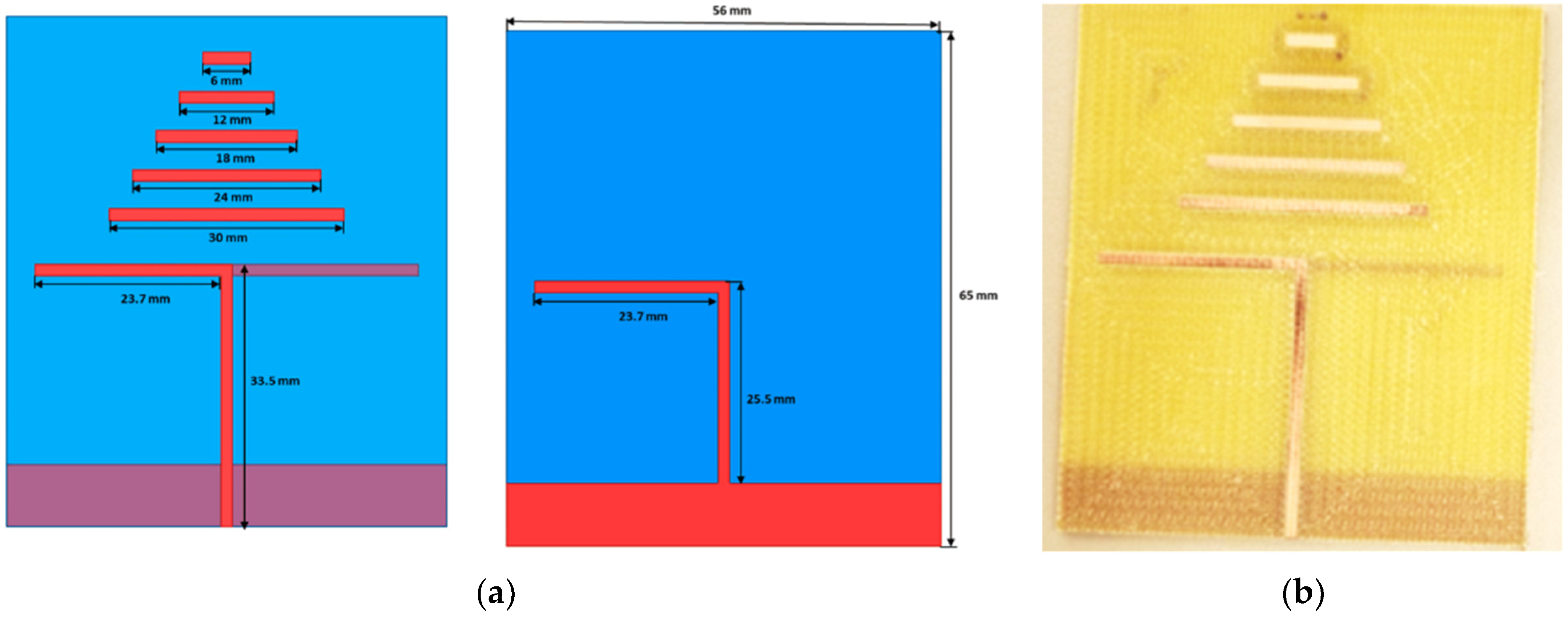
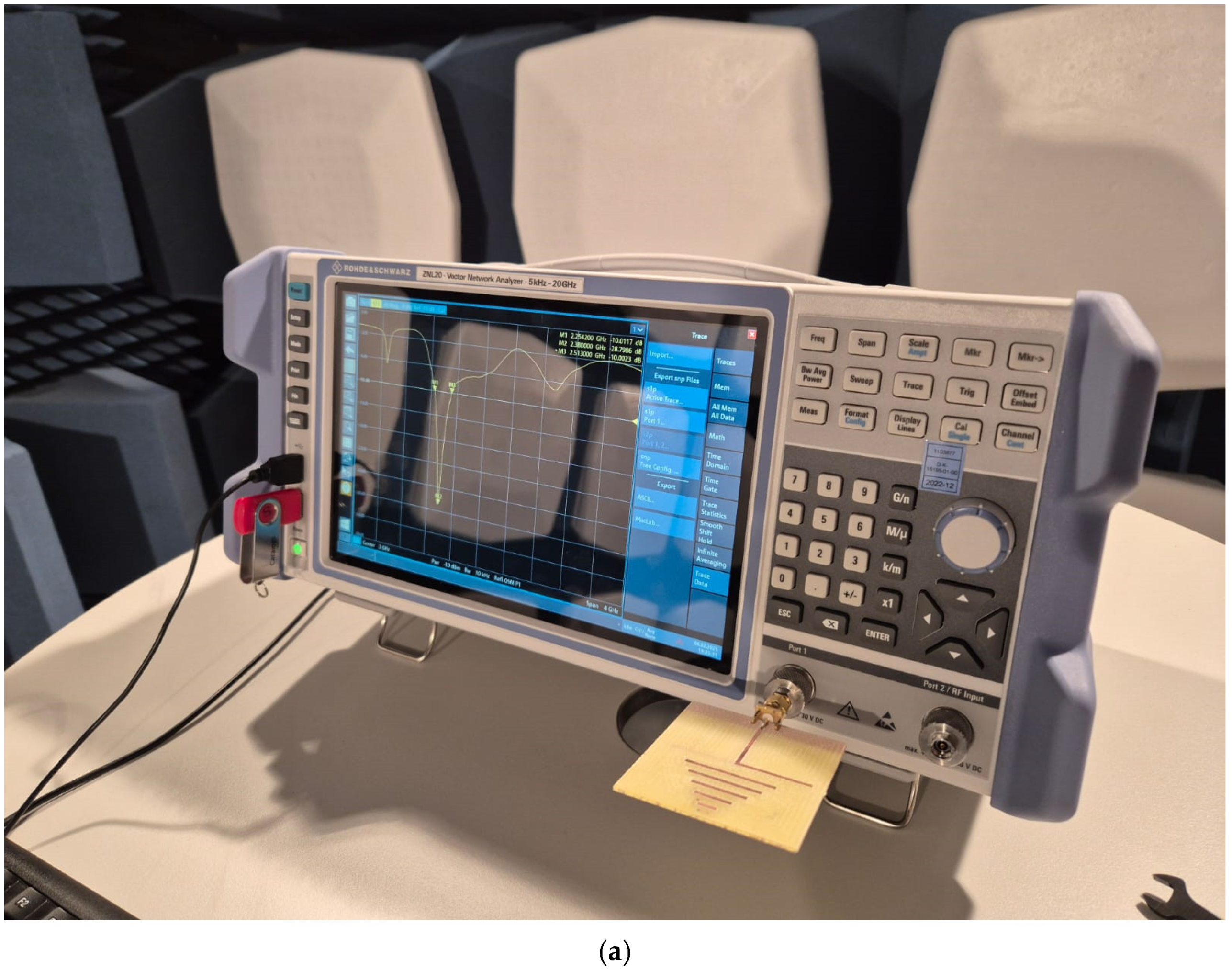
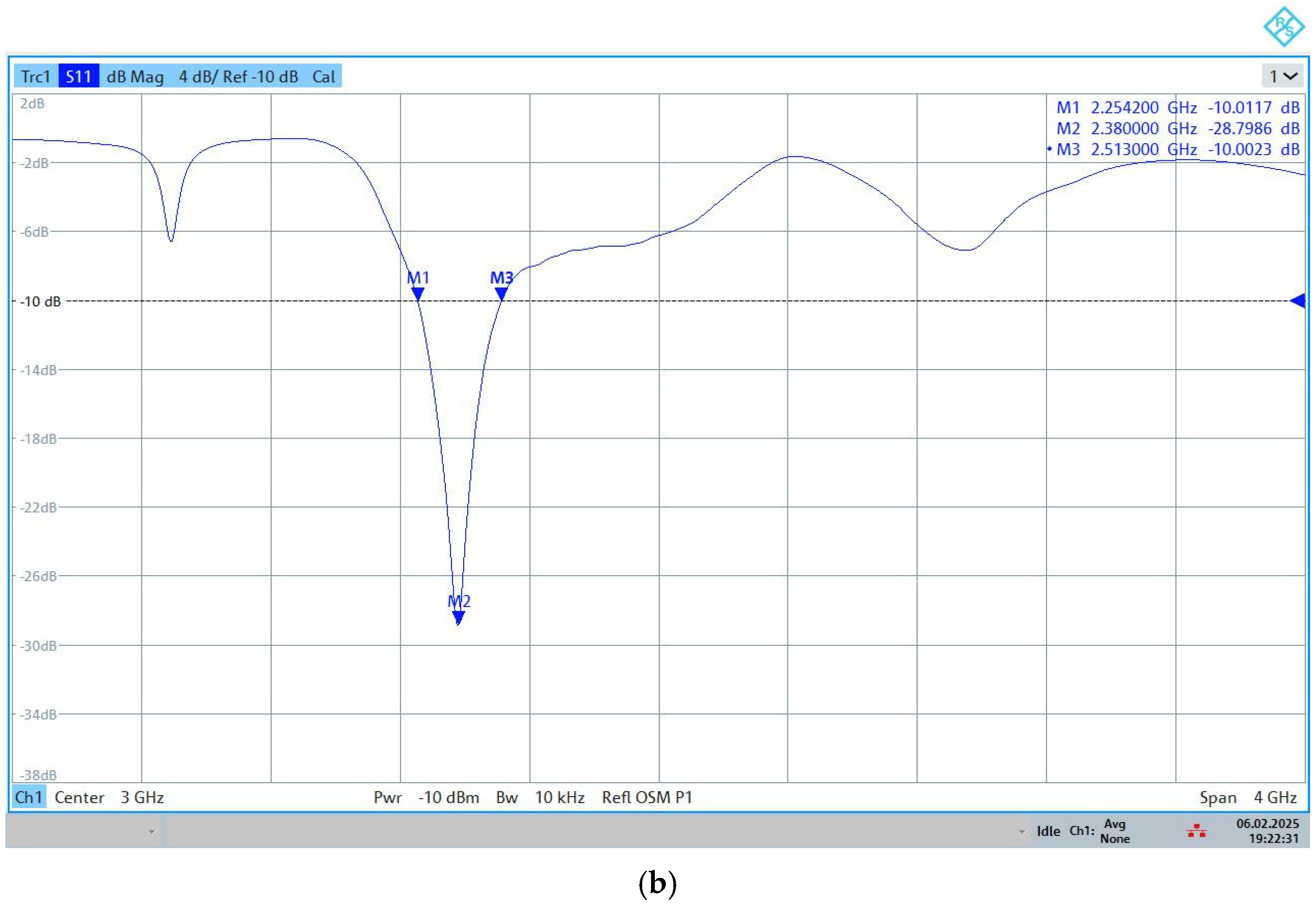
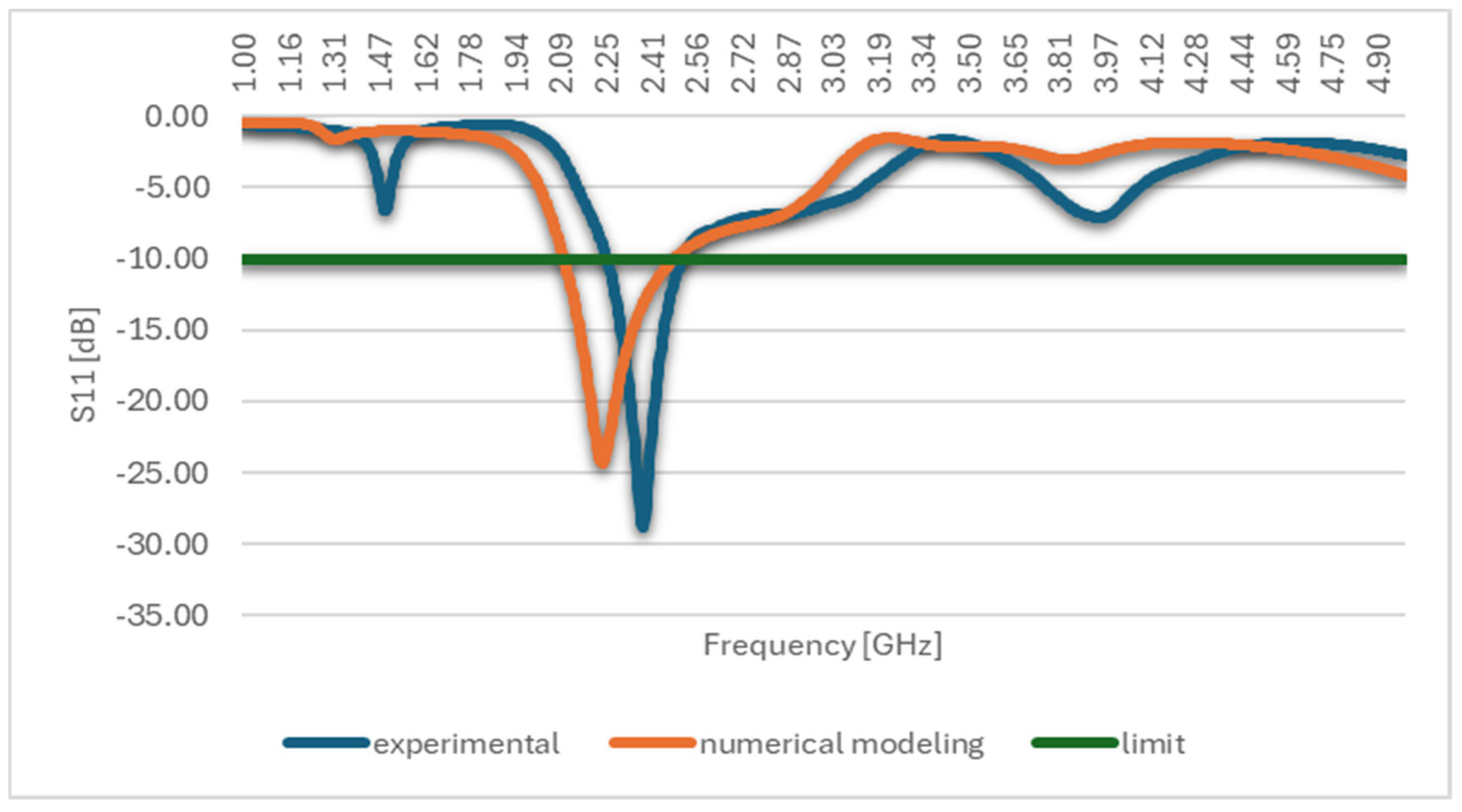
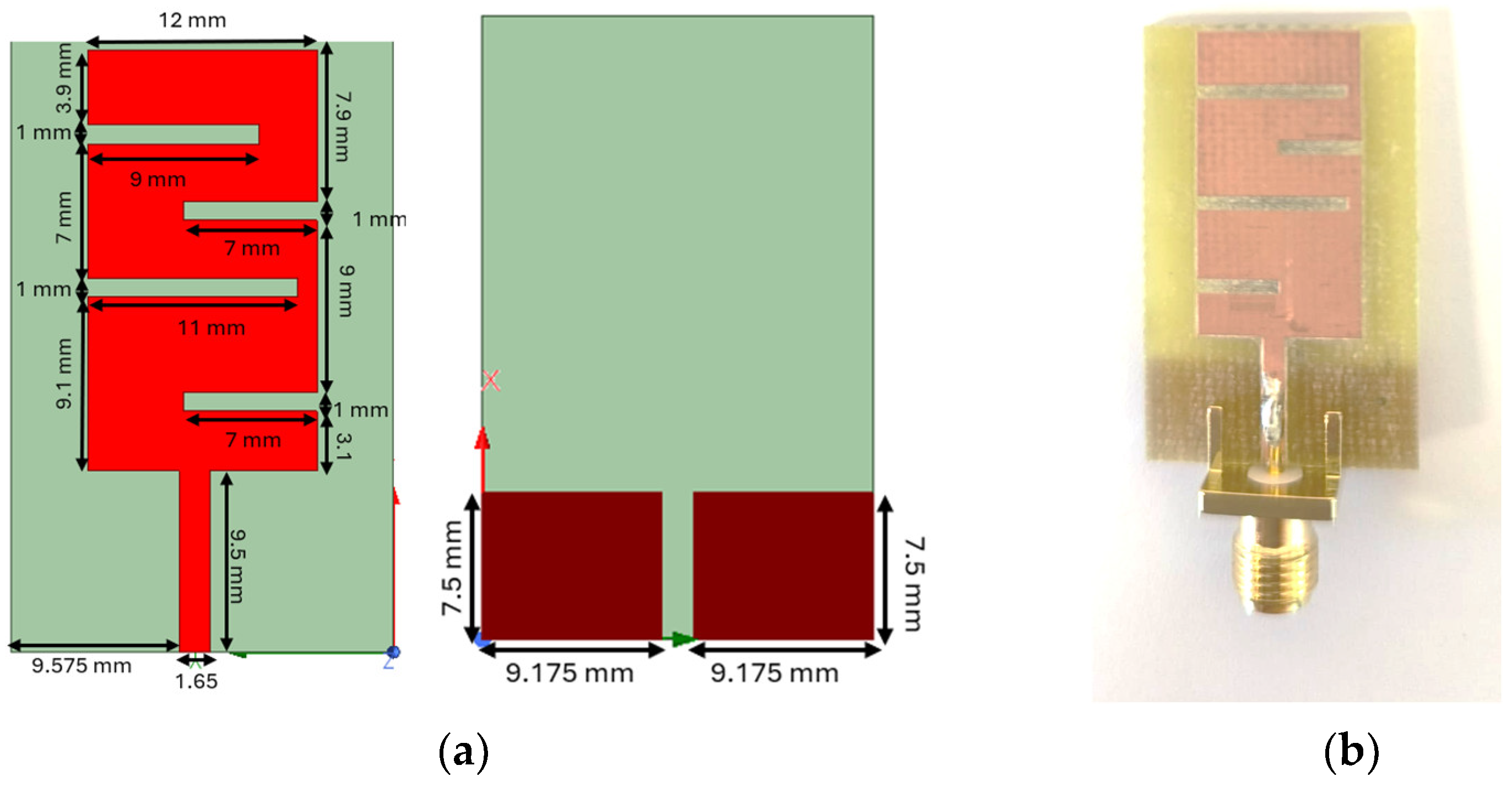
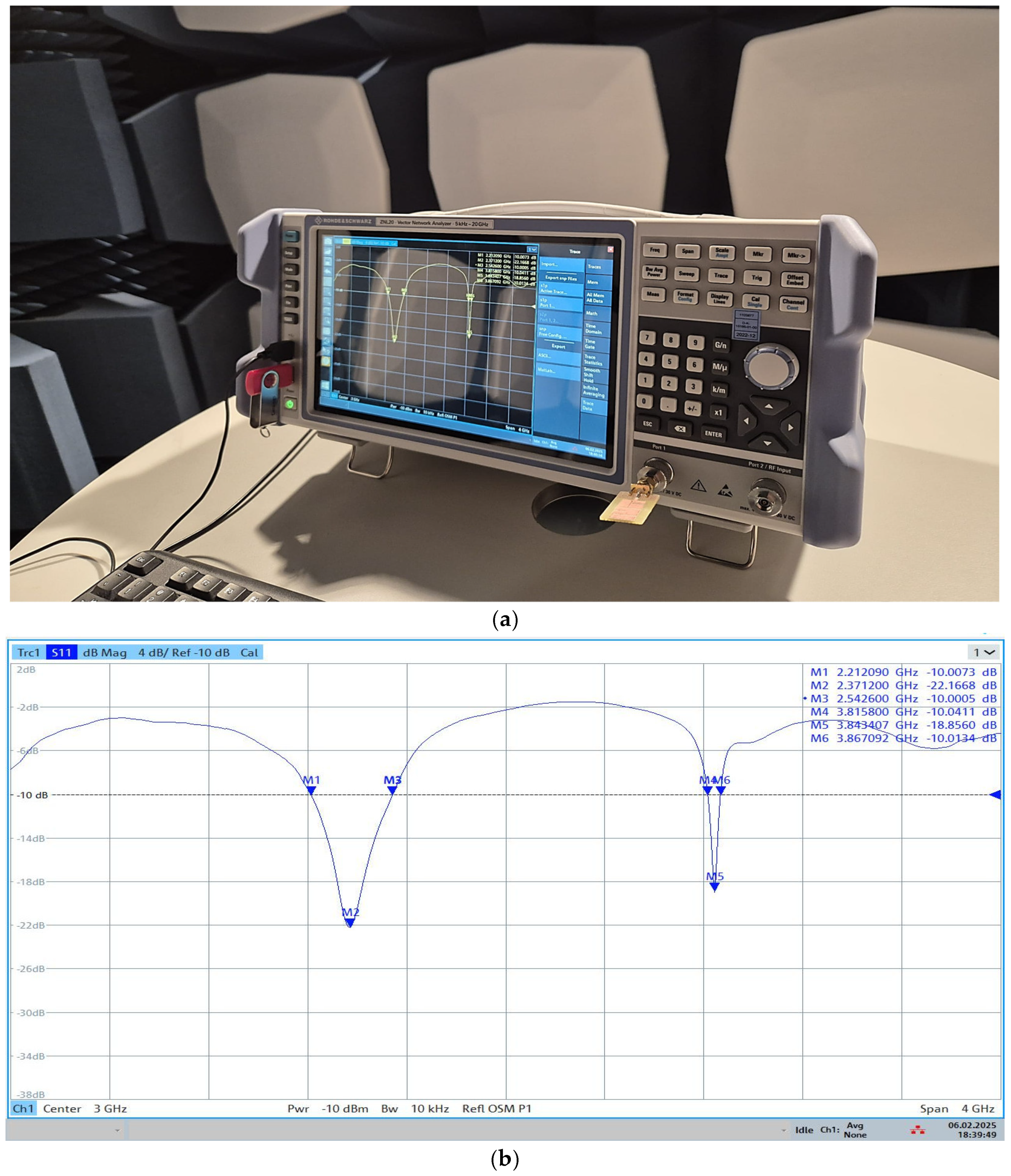


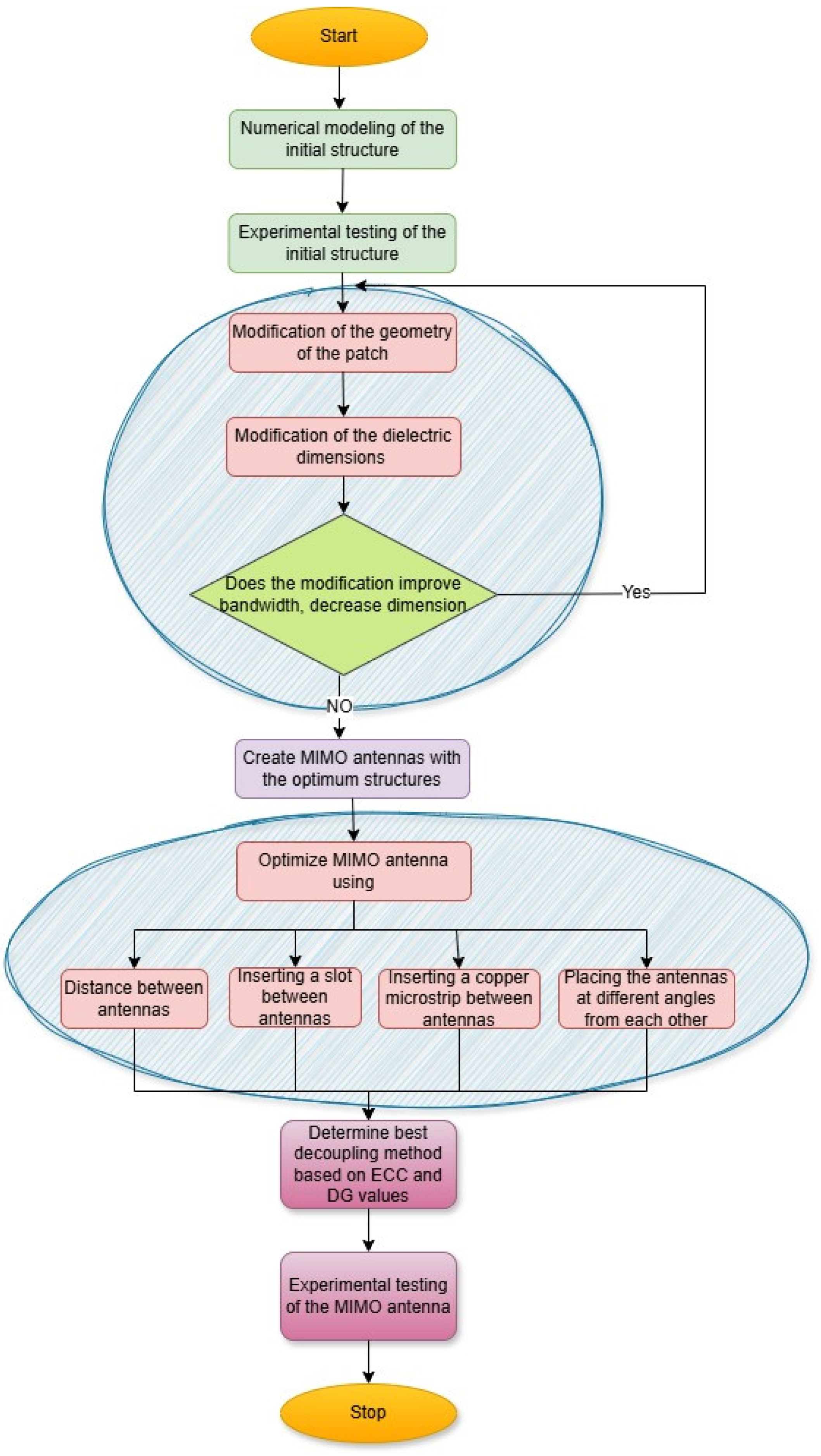


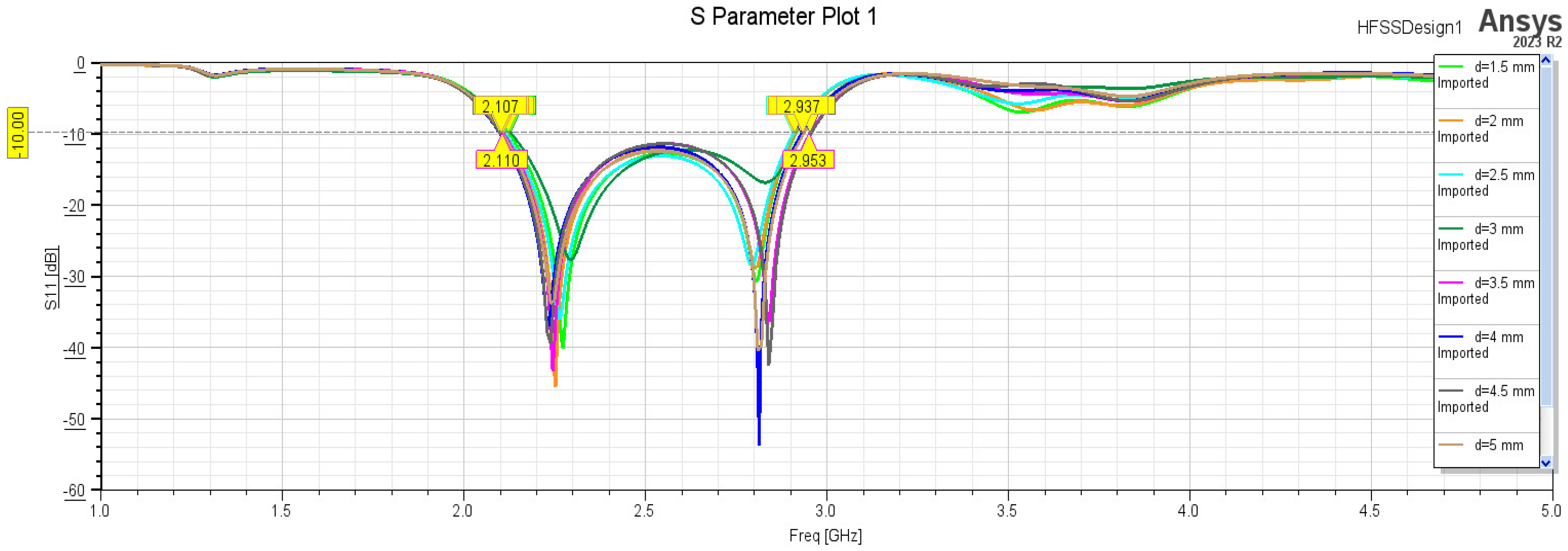

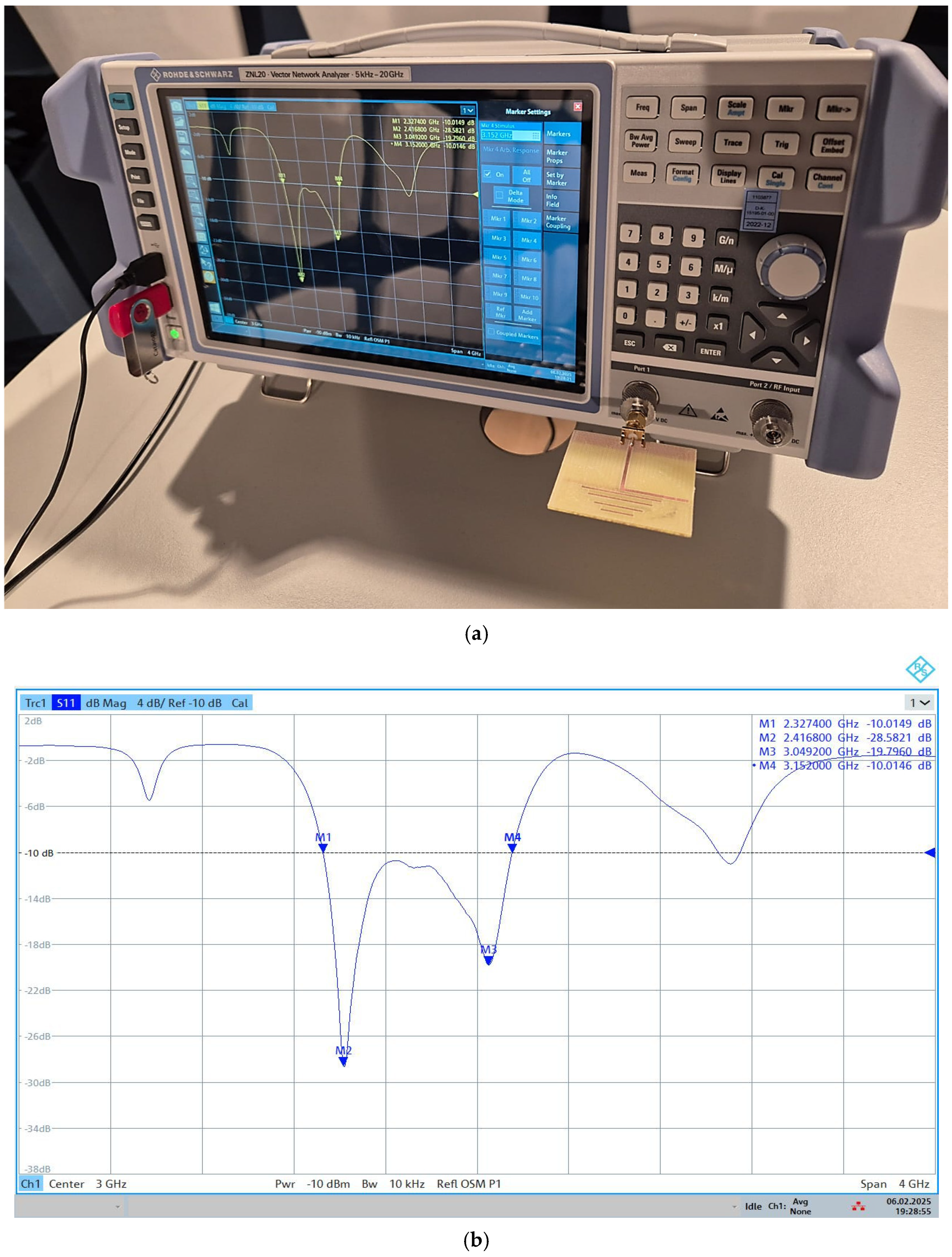
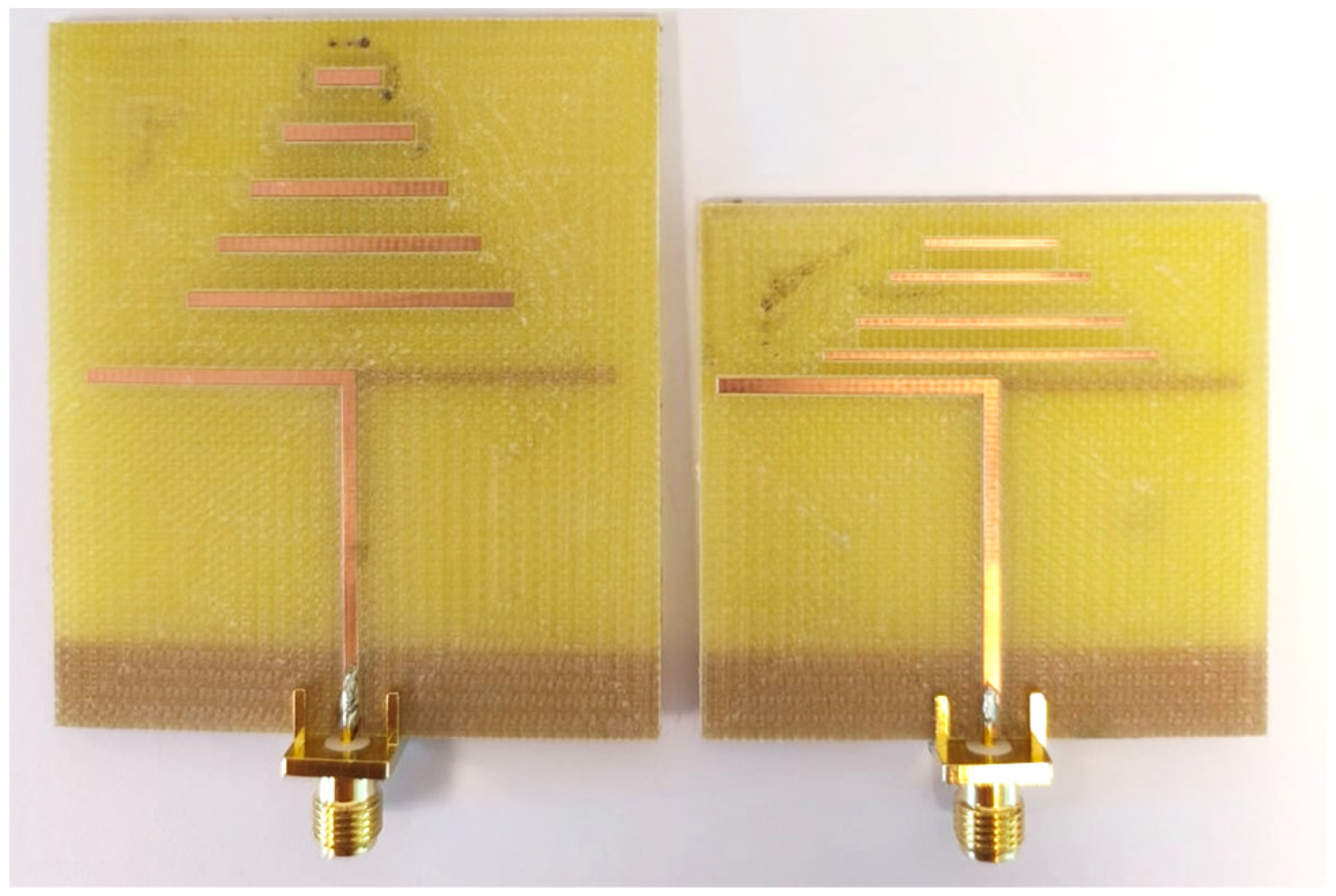
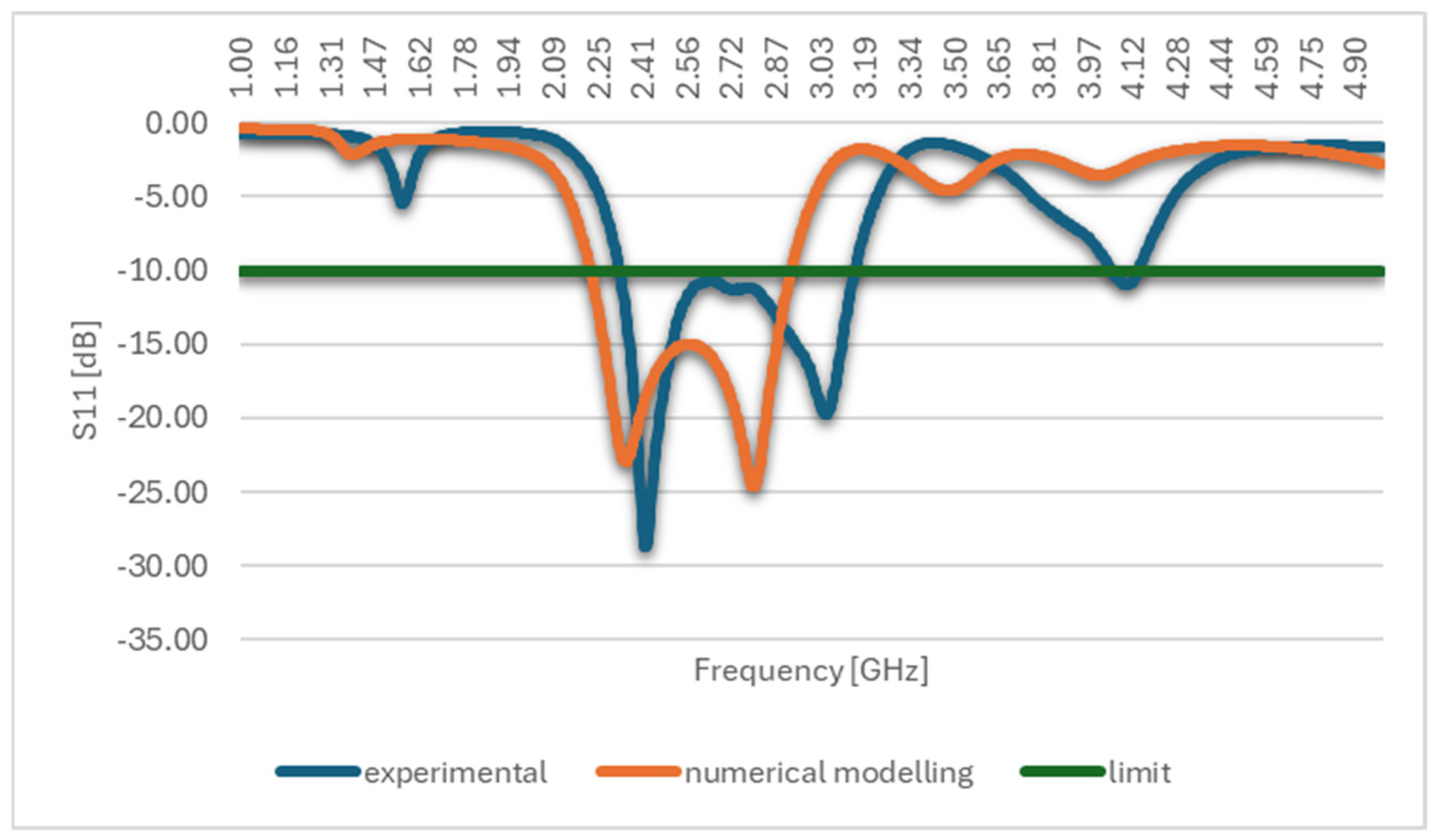

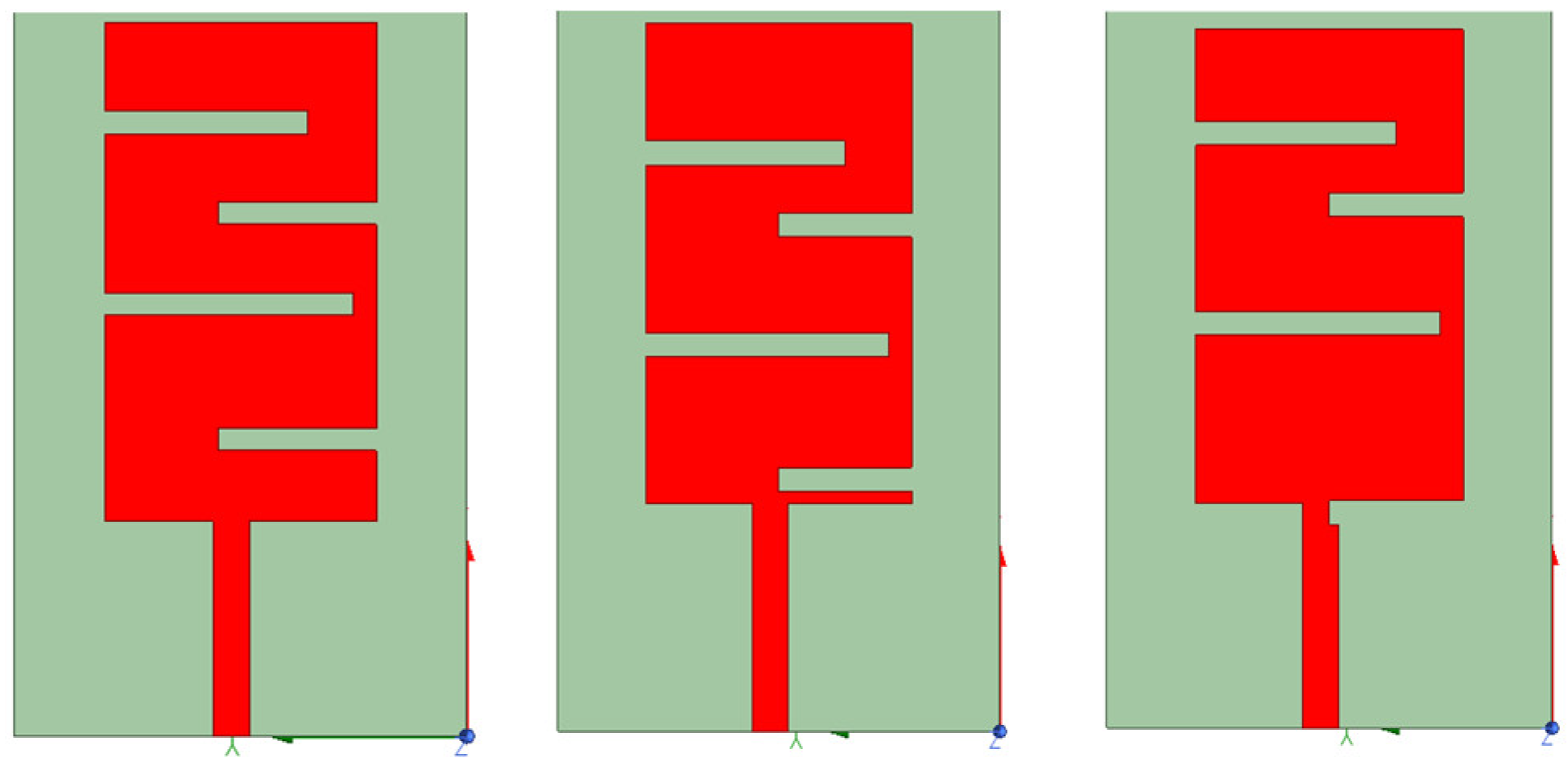
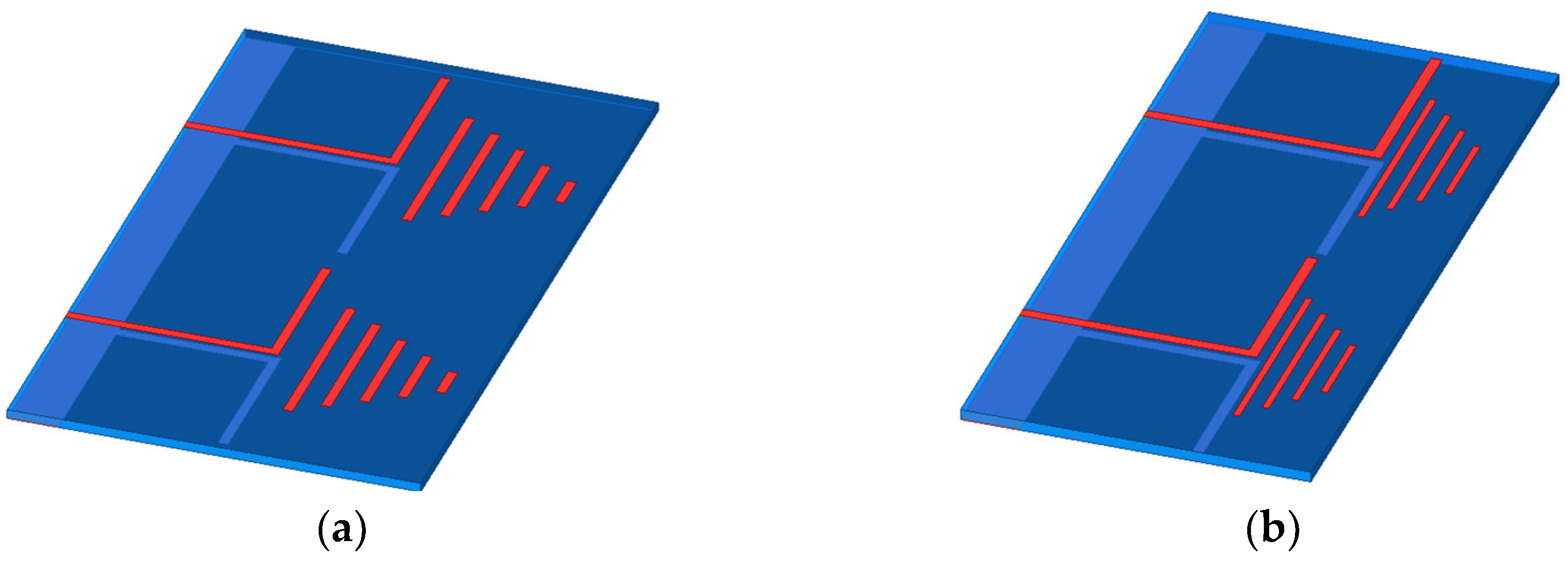
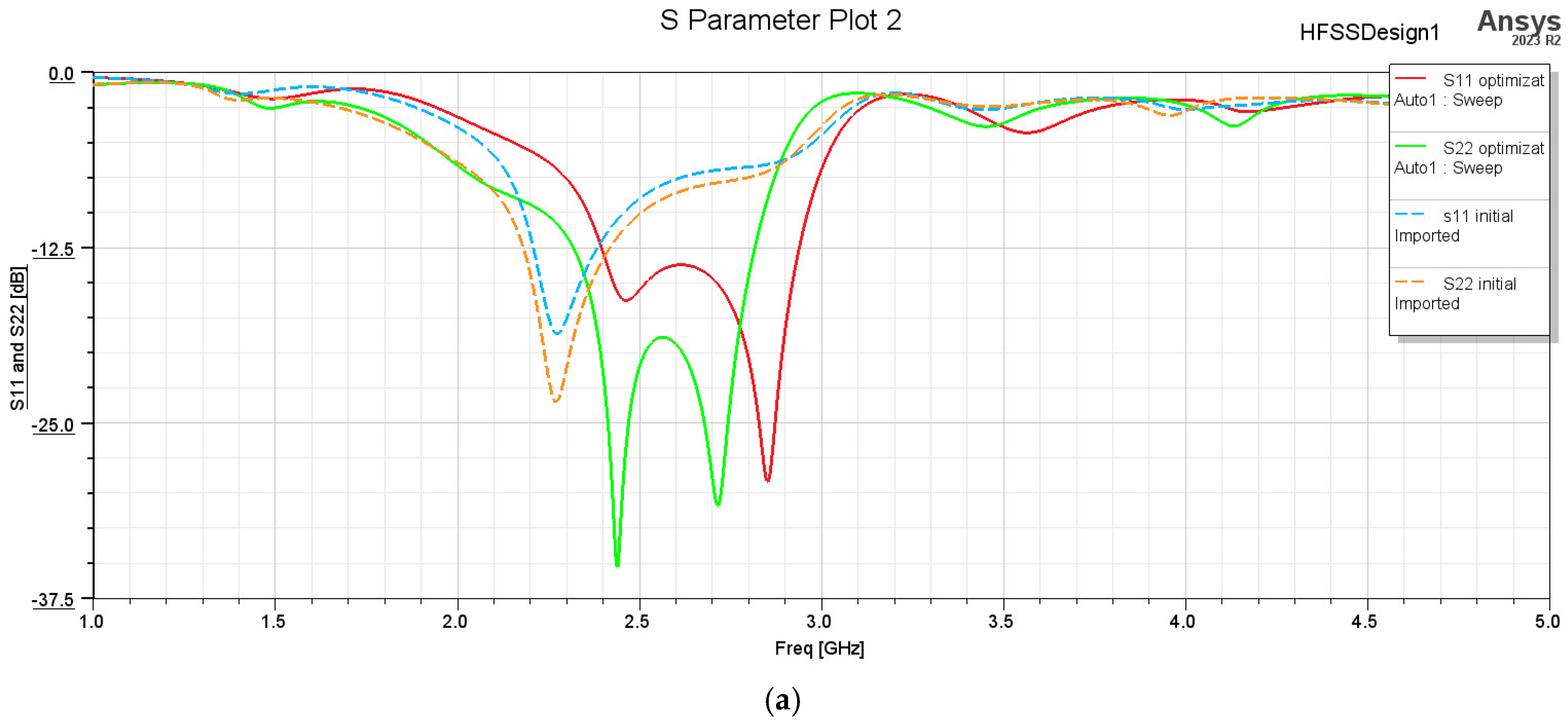
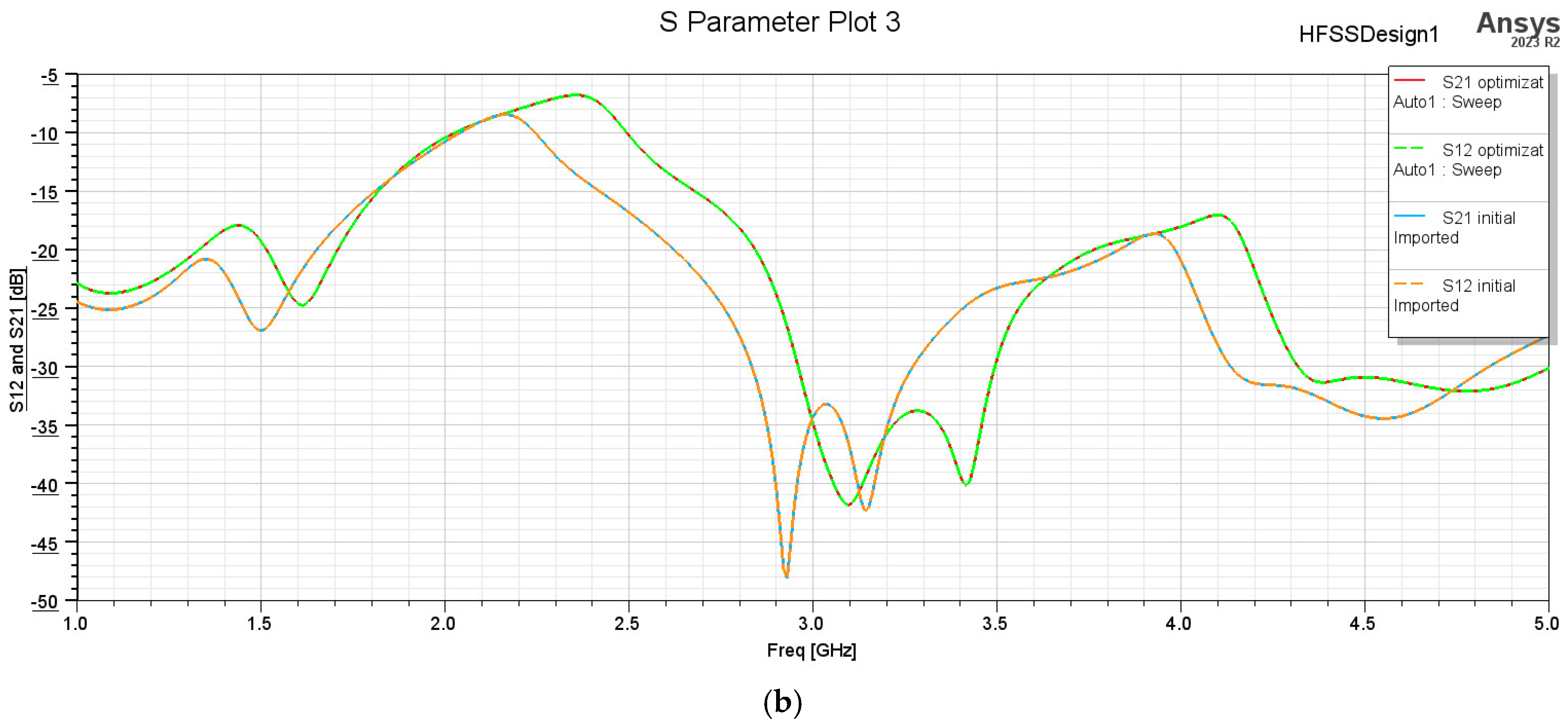

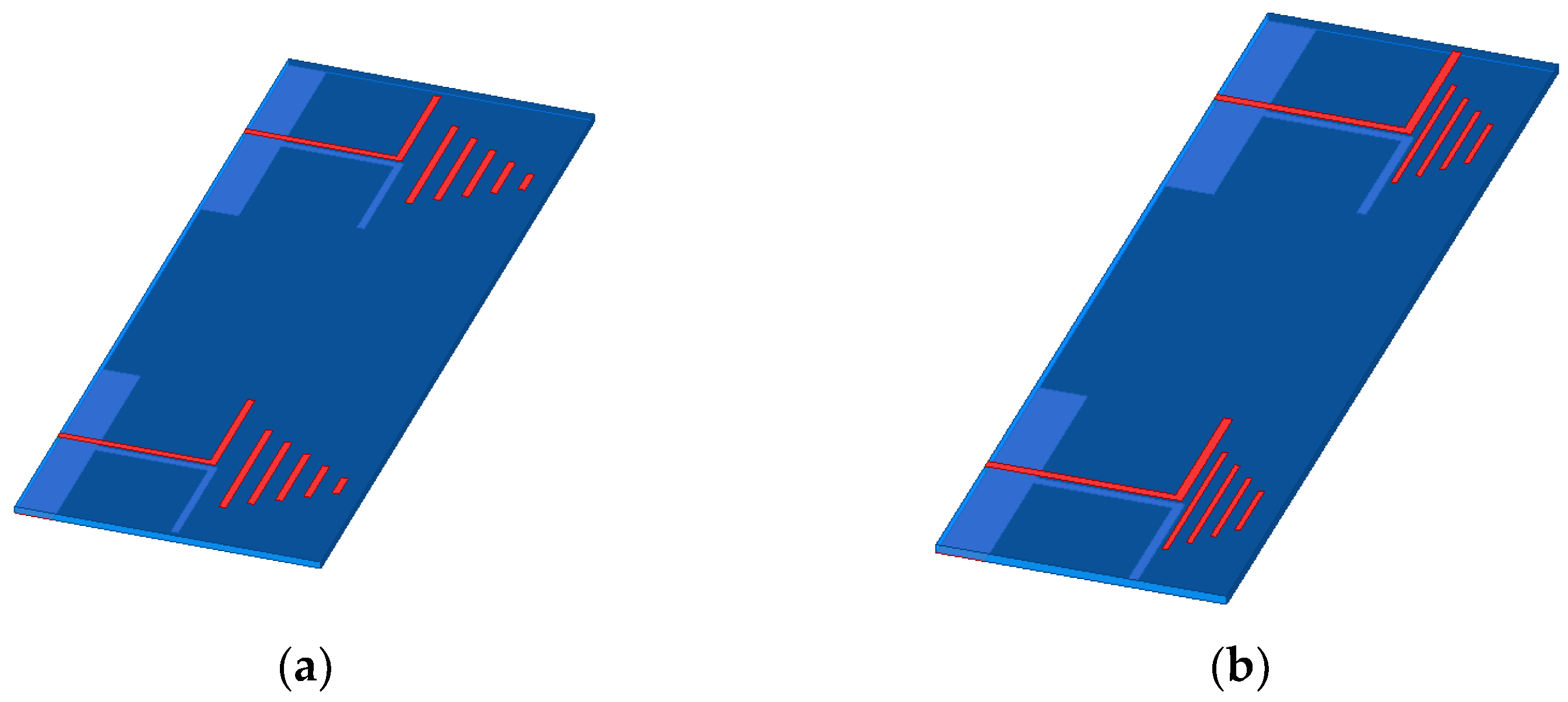


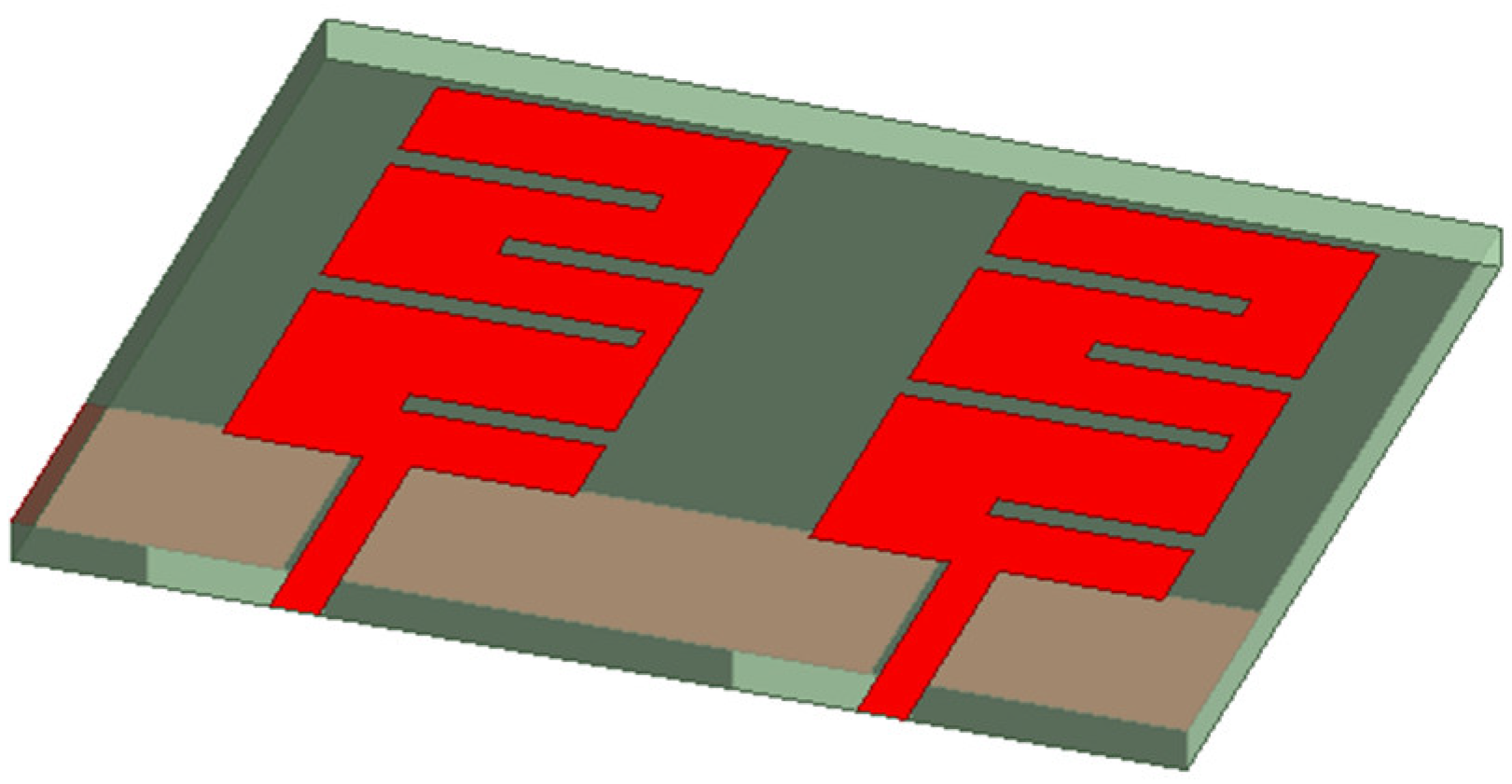
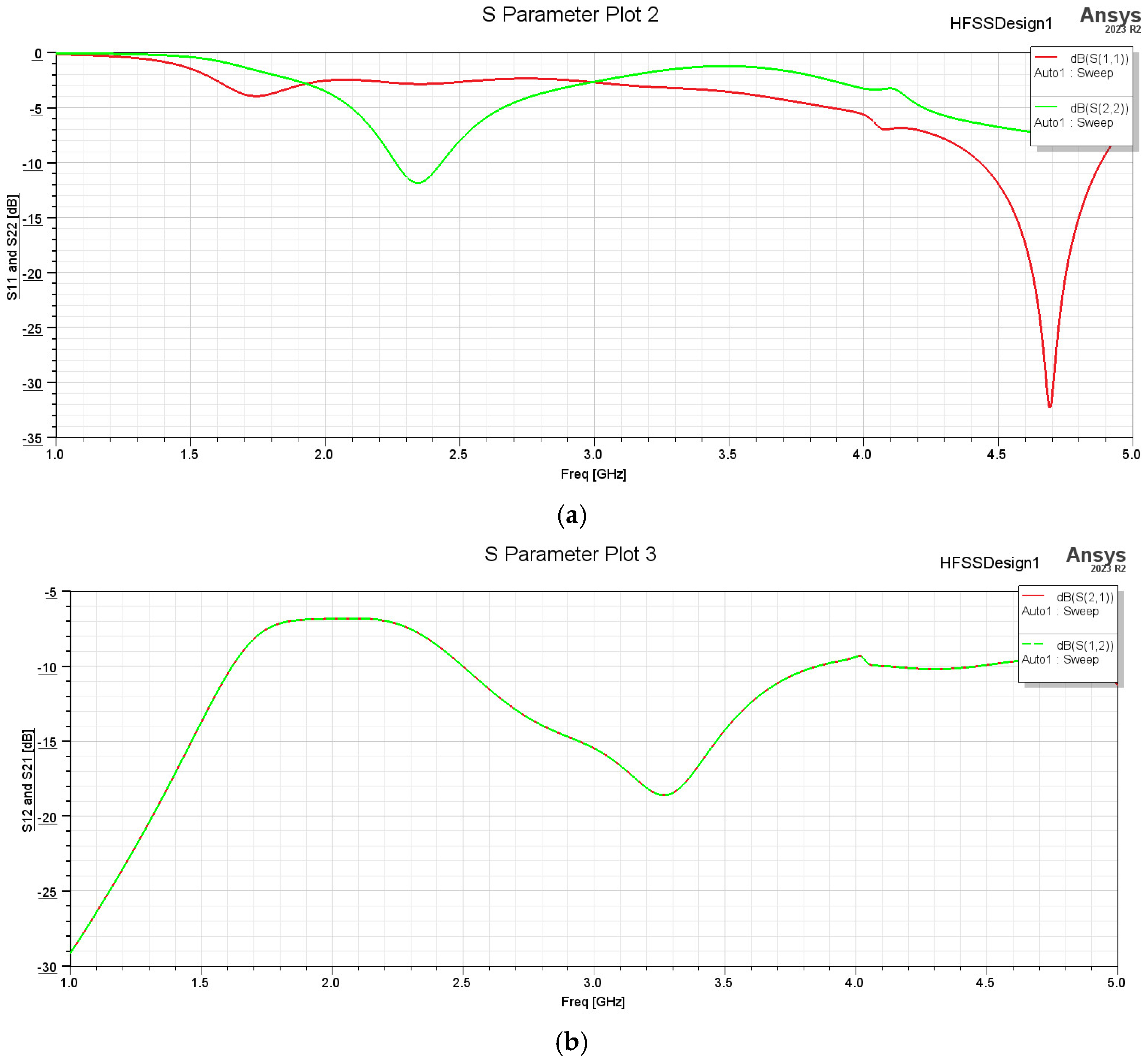

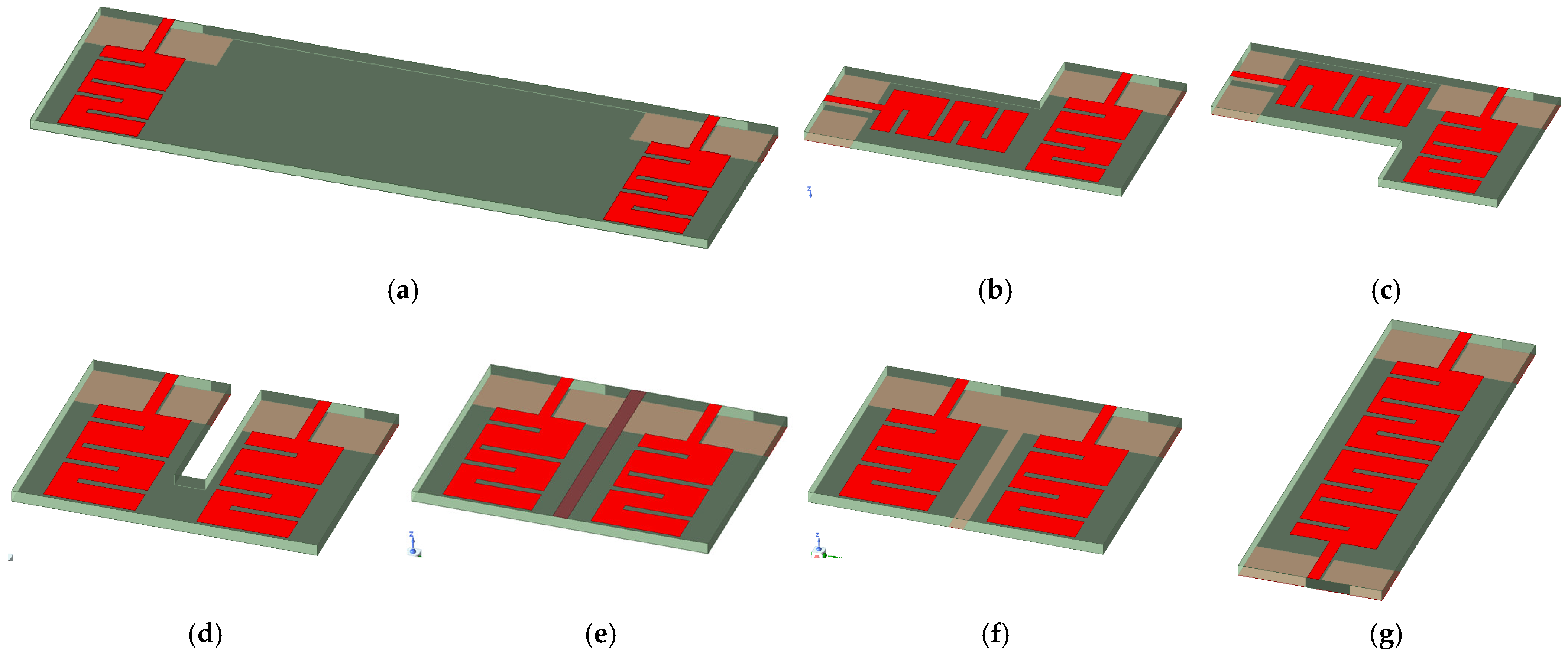
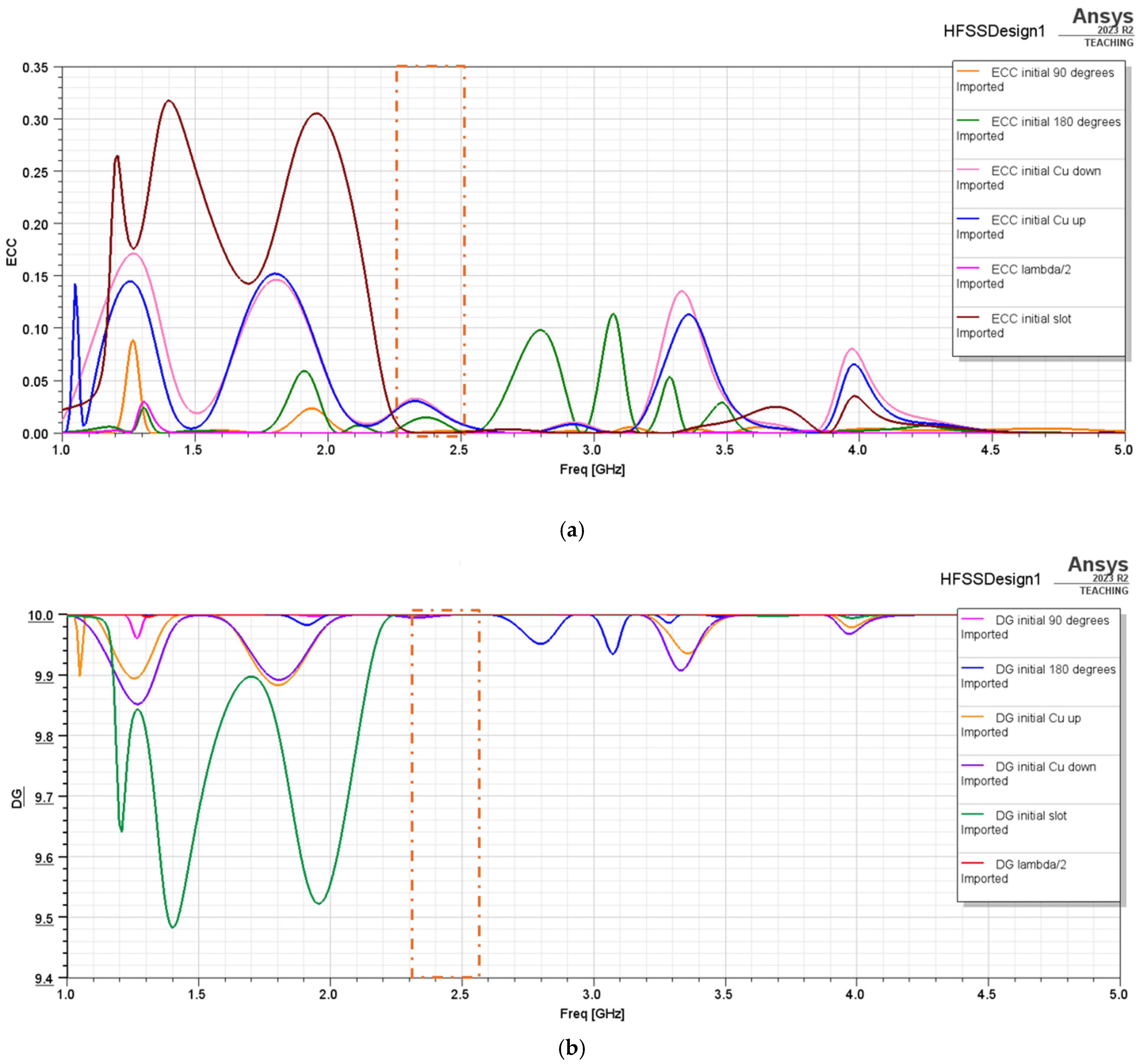


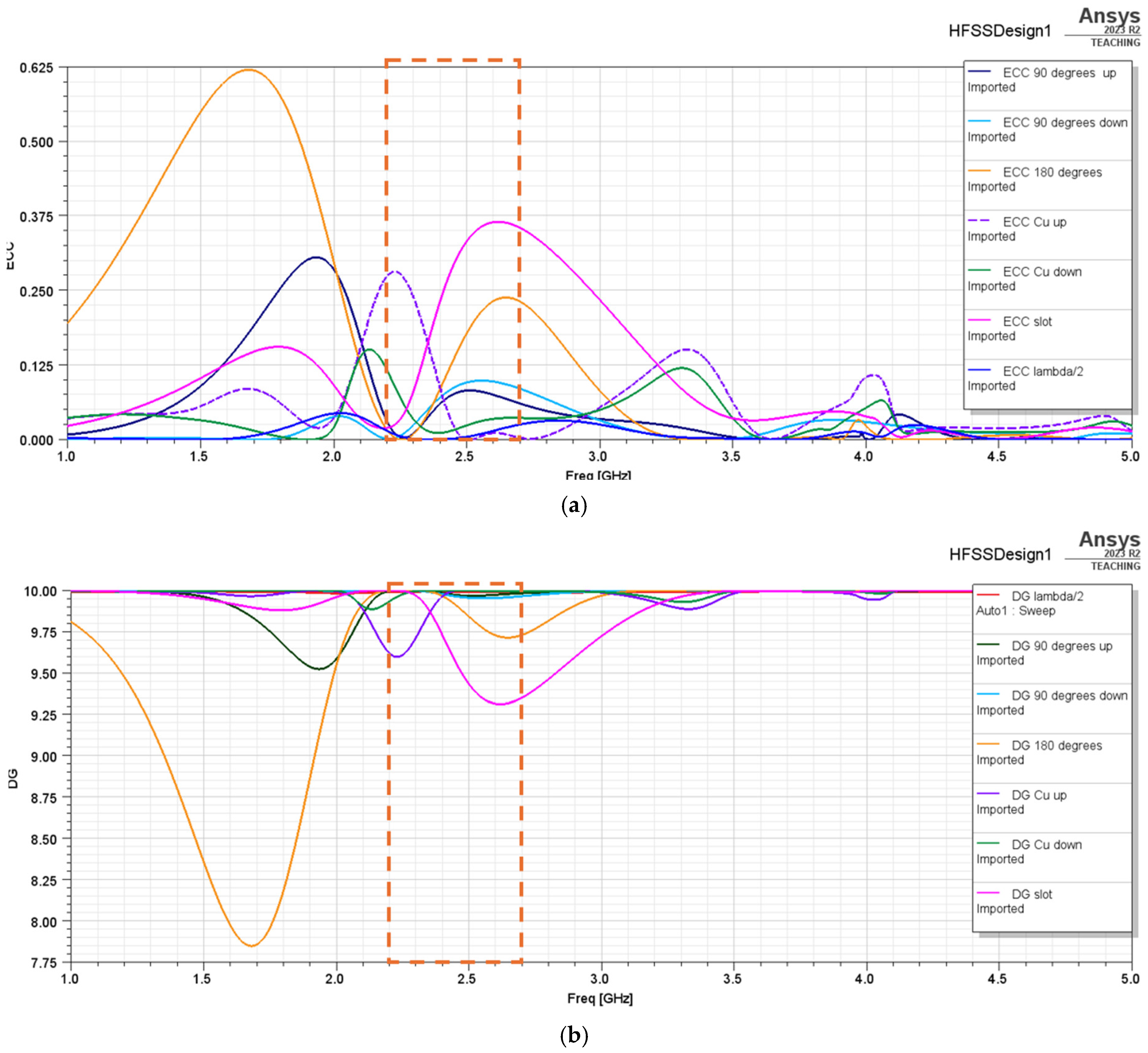
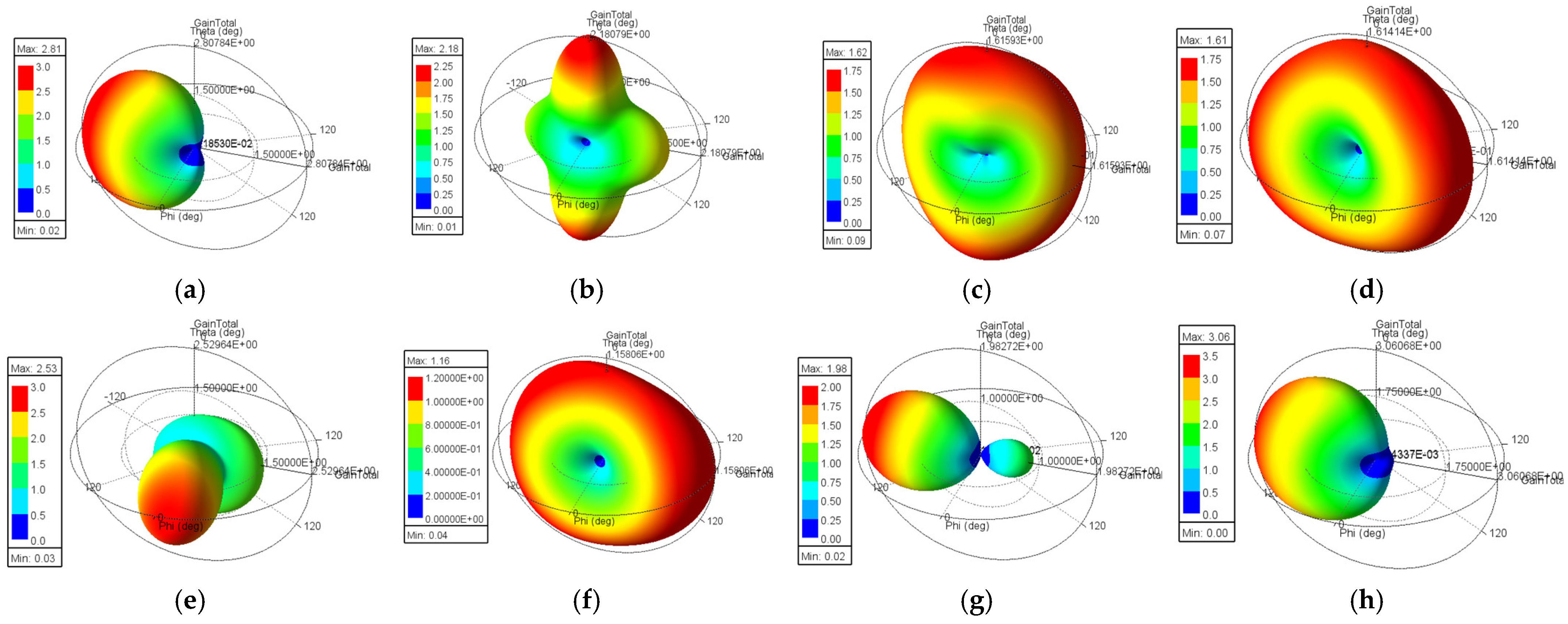
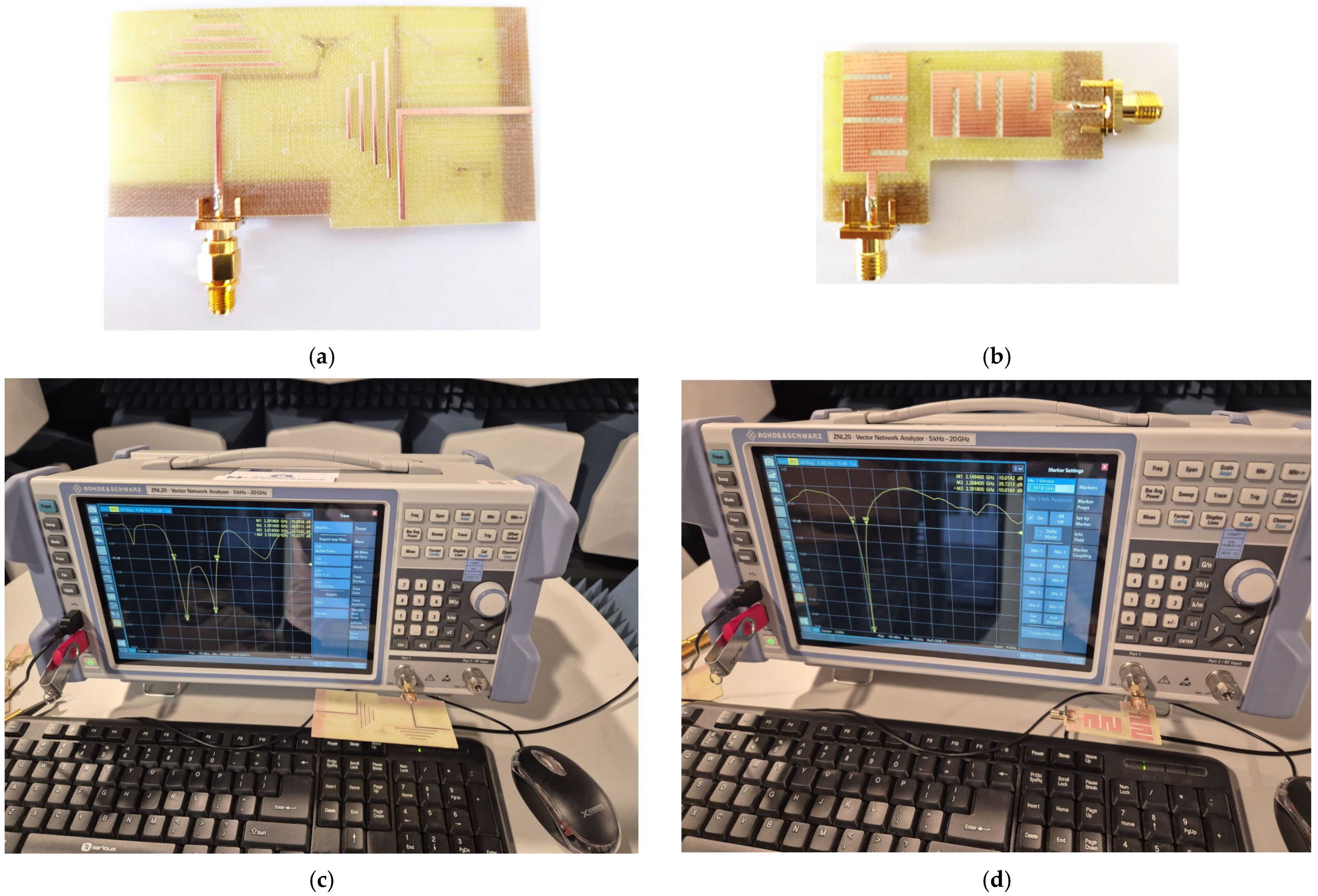
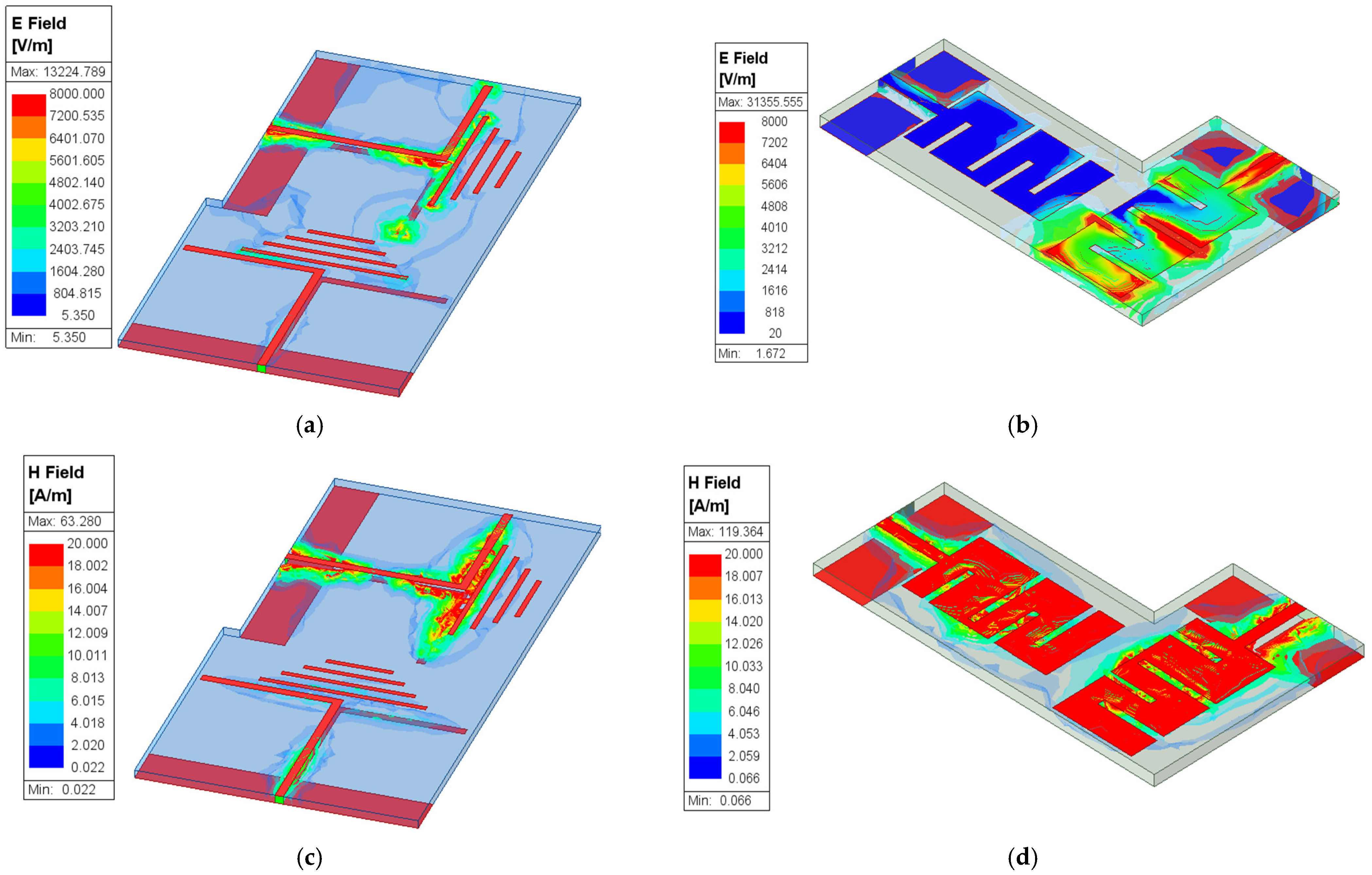
Disclaimer/Publisher’s Note: The statements, opinions and data contained in all publications are solely those of the individual author(s) and contributor(s) and not of MDPI and/or the editor(s). MDPI and/or the editor(s) disclaim responsibility for any injury to people or property resulting from any ideas, methods, instructions or products referred to in the content. |
© 2025 by the authors. Licensee MDPI, Basel, Switzerland. This article is an open access article distributed under the terms and conditions of the Creative Commons Attribution (CC BY) license (https://creativecommons.org/licenses/by/4.0/).
Share and Cite
Constantinescu, C.; Pacurar, C.; Giurgiuman, A.; Munteanu, C.; Andreica, S.; Gliga, M.; Grindei, L. From Antenna Optimization to MIMO Structures: A Unified Design Framework. Technologies 2025, 13, 153. https://doi.org/10.3390/technologies13040153
Constantinescu C, Pacurar C, Giurgiuman A, Munteanu C, Andreica S, Gliga M, Grindei L. From Antenna Optimization to MIMO Structures: A Unified Design Framework. Technologies. 2025; 13(4):153. https://doi.org/10.3390/technologies13040153
Chicago/Turabian StyleConstantinescu, Claudia, Claudia Pacurar, Adina Giurgiuman, Calin Munteanu, Sergiu Andreica, Marian Gliga, and Laura Grindei. 2025. "From Antenna Optimization to MIMO Structures: A Unified Design Framework" Technologies 13, no. 4: 153. https://doi.org/10.3390/technologies13040153
APA StyleConstantinescu, C., Pacurar, C., Giurgiuman, A., Munteanu, C., Andreica, S., Gliga, M., & Grindei, L. (2025). From Antenna Optimization to MIMO Structures: A Unified Design Framework. Technologies, 13(4), 153. https://doi.org/10.3390/technologies13040153







